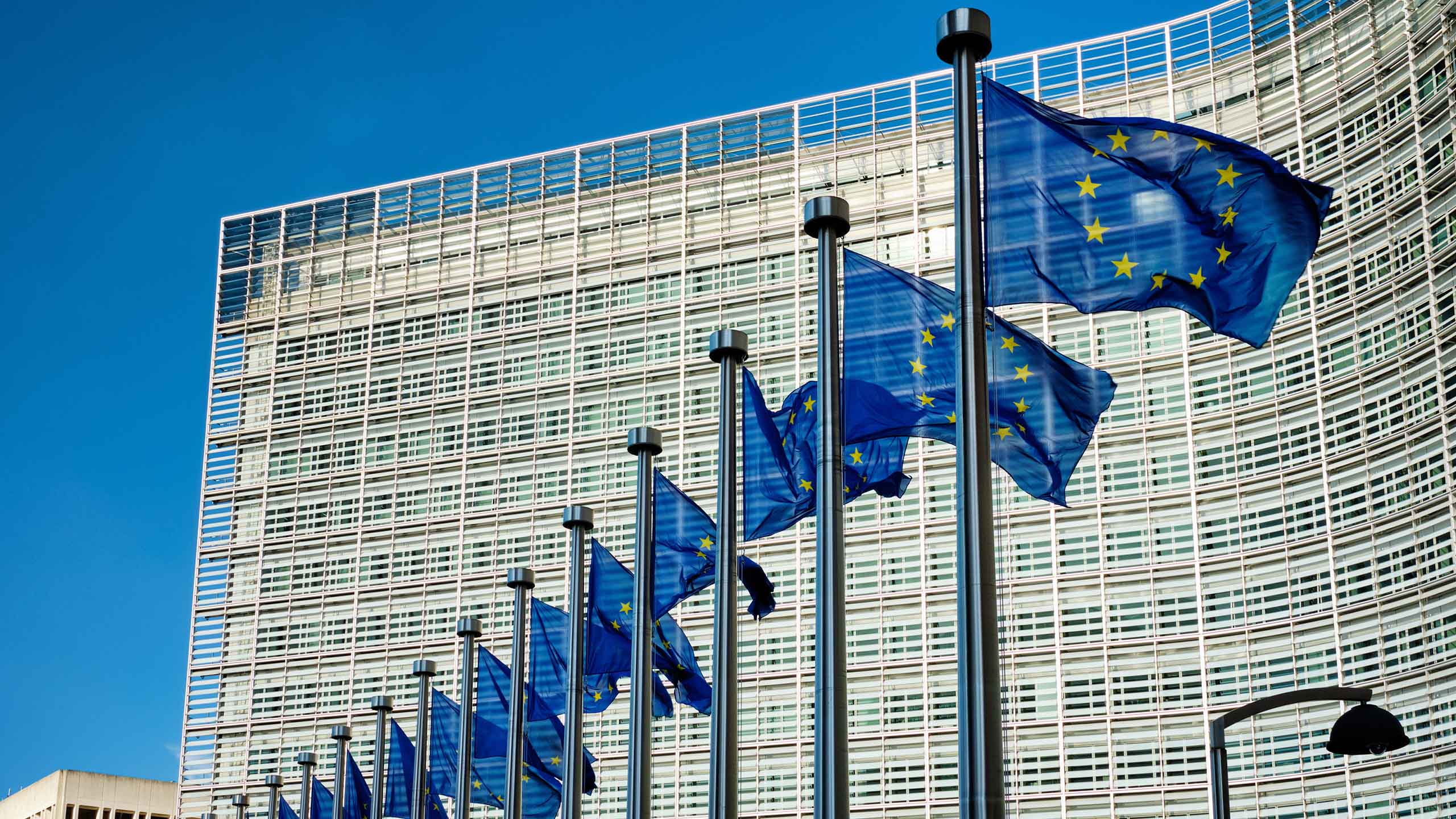The week that was …
Economic round-up
UK GDP
The UK economy surprised experts with strong growth over the first three months of 2025, according to the ONS. GDP grew 0.7% over the first quarter of the year, around 0.1% ahead of consensus expectations among economists and significantly better than the previous three months. Read more from Sky here
US/China trade deal
The US and China confirmed a reduction in tariffs after talks in Switzerland last weekend. Some tariffs will be cancelled and others will be suspended for 90 days. The result is that additional US tariffs on Chinese imports will fall to from 145% to 30%. Read more from the BBC here
UK unemployment data
The UK unemployment rate increased slightly in the three months to March from 4.4% to 4.5%, while wage growth declined from 5.9% to 5.6%. Read more from Morningstar here
US inflation
The consumer price index rose 0.2% in April, putting the 12-month inflation rate at 2.3%, its lowest level since February 2021. Core CPI inflation increased to 2.8% over the month. Egg prices fell, but are still 49.3% higher than a year ago. Read more from CNBC here
Japan GDP
Japan’s economy shrank for the first time in a year – and faster than expected – over the first quarter of 2025. The export-heavy country is especially vulnerable to tariffs from the US – particularly its automobile sector. Read more from Reuters here
US consumer sentiment
May saw consumer confidence in the US weaken for the fourth consecutive month, even as president Donald Trump dialled back his tariffs. The reading was below economists’ consensus expectations and the index is now at its lowest level since the inflation peak three years ago. Read more from Yahoo here
Markets round-up
Record US treasuries demand
Foreign holdings of US treasuries soared to a record high in March, rising for a third straight month, suggesting demand for US government debt remains robust. Holdings of US treasuries surged to $9.05tn (£6.77tn) in the month – an all-time peak. Read more from Reuters here
Moody’s downgrades
US debt Moody’s Investor Service has downgraded US government debt to Aa1 from Aaa. This had been its last triple-A rating. The group said the move reflected “the increase over more than a decade in government debt and interest payment ratios to levels that are significantly higher than similarly rated sovereigns”. Read more from Marketwatch here
S&P back in the green for 2025
The S&P 500 index has risen 23% from the intraday low of 8 April, fuelled by a trade-war de-escalation that culminated in last weekend’s retreat on China tariffs. The benchmark US index is now back into the green for the year. Read more from Reuters here
Tech IPO market revives
The technology IPO market is starting to revive, with the public market debut of eToro and Hinge Health expected this week. Fintech company Chime filed a prospectus last week. Read more from CNBC here
“It is not rosy for the UK – we are not going to suddenly return to 2.5% GDP growth – but because the valuation is so low, when the direction of travel does starts to turn, there could be a very substantial re-rating.
Selected equity and bond markets: 09/05/25 to 16/05/25
| Market | 09/05/25 (Close) |
16/05/25 (Close) |
Gain/loss |
|---|---|---|---|
| FTSE All-Share | 4641 | 4725 | +1.6% |
| S&P500 | 5660 | 5959 | +5.2% |
| MSCI World | 3712 | 3863 | +4.1% |
| CNBC Magnificent Seven | 301 | 330 | +9.7% |
| US 10-year treasury (yield) | 4.40% | 4.48% | |
| UK 10-year gilt (yield) | 4.57% | 4.65% |
Investment round-up
Investors up tech exposure
US president Donald Trump’s April tariffs have heightened fears of a global recession, but investors have shown a mixed response, according to the latest Bank of America Global Fund Manager Survey. Cash levels fell and the tech allocation soared in May.
Fund groups weather volatility
More than half (54%) of UK fund groups have reported net sales growth in the first quarter of the year, with the overall figure falling by £1bn “in the face of ongoing volatility”, according to the latest Pridham Report. There was a clear shift towards short-duration fixed-income and money market funds in the first quarter.
Hoctor-Duncan departs River Global
River Global asset management CEO Alex Hoctor-Duncan has announced his departure from the firm. He will be replaced by current head of equities Matt Hudson, who will take over as CIO and assume Hoctor-Duncan’s regulatory and management responsibilities.
Rathbones makes distribution hires
Rathbones Asset Management has hired Columbia Threadneedle’s co-head of UK distribution Steve Armitage as head of strategic partnerships and regional sales. Rathbones has also appointed Sam Collett, from Franklin Templeton, as head of London and global financial institutions.
Parmenion diversifies sustainable exposure
Parmenion Investment Management has added five funds to its sustainable portfolios to further diversify style, sector and company exposure: Carmignac Emerging Markets, JPM Emerging Markets ESG, Regnan Sustainable Water, Schroder Global Sustainable Value and Sparinvest Ethical Global Value and Waste.
… and the week that will be
Retail results
This week is likely to reveal the real-time effect of waning consumer confidence as a number of US retailers – including Home Depot, Lowe’s and Target – report their results. This should indicate whether there is further economic fallout from the shifting tariff backdrop as consumer confidence readings continue to worsen. Read more from Reuters here
UK/EU summit
This week should see the announcement of a new trade deal between the UK and the European Union. The outcome is important for economic growth. Sticking points are set around fishing rights and a youth mobility scheme. The CBI has called for a “major reset” of relations with the EU, urging both sides to “build bridges” and deliver “practical steps” to ease travel, cut red tape and take joint action on energy, climate and defence. Read more from the BBC here
The week in numbers
UK CPI: Consensus expectations are for prices to rise 3.3% year-on-year, up from 2.6%, and 0.2% month-on-month, over April. Core CPI for the month is expected to be 3.3% year-on-year, down from 3.4%.
China retail sales: Consensus forecasts have April’s figures rising 5.6% year-on-year, down from 5.9%.
Eurozone consumer confidence: The flash index reading for May is expected to edge up to -16 from -16.7.
German IFO index: The May reading of the business climate index is expected to fall to 86.4 from 86.9.
UK PMIs: The flash index reading for May of the manufacturing PMI is expected to rise to 46 from 45.4, while its services counterpart is expected to rise to 49.3 from 49.
US initial jobless claims: Claims for the week ending 17 May are expected to rise to 231,000 from 229,000.
US PMIs: The flash index reading for May of the manufacturing index is forecast to rise to 50.3 from 50.2, and services to fall to 50.6 from 50.8.
UK retail sales: Sales rose 2.6% year-on-year in March. Japan inflation: Consensus expectations for April are that prices rose 3.7% year-on-year from 3.6%, and core CPI will hold steady at 3.2%.
Company news: Full-year results expected from British Land, Cranswick, JD Sports Fashion, Marks & Spencer, Ryanair, Severn Trent, SSE, Tate & Lyle and Vodafone.
In focus: UK in play
Blink and you might miss it but there were flickers of optimism in the immediate aftermath of the latest UK GDP figures, with even the BBC tentatively suggesting the uptick might not be temporary. The pessimists quickly regained their stride, however, arguing the statistics had been distorted by stockpiling ahead of ‘Liberation Day’. So who is right about the prospects for the UK economy?
“More robust than many people had expected,” was the verdict of Danni Hewson, head of financial analysis at AJ Bell. “Growth has been resilient and significant despite concerns about the impact of increased employment costs and uncertainty linked to Donald Trump’s tariffs.” In particular, she notes, the services sector has been strong, with people willing to get out and spend money as inflation cools and wages remain robust.
It is clear, however, that at least some of the UK’s strength may well be down to the aforementioned stockpiling – for example, Scott Gardner, investment strategist at digital wealth manager Nutmeg, says it could be argued growth in the first quarter was “made in America”, explaining: “The spectre of tariffs pre-‘Liberation Day’ encouraged some inventory stocking of UK-made goods.” “There were also some home-grown distortions,” he adds. “The home sales rush leading up to the Chancellor’s hike in stamp duty costs in early April gave retail sales a boost.”
Gardner takes a gloomy view of the outlook for the UK from here. “Looking forward, while the first quarter saw decent growth, there is some uncertainty ahead,” he believes. “The rise in National Insurance contributions for businesses has not shown up so far in labour market data. Elsewhere, manufacturing and service PMIs have slowed consistently through the quarter. Alongside the fallout from recent tariff announcements, this slowdown could provide a headwind in the second quarter, potentially stalling UK economic growth.”
There is a more optimistic take, however, and James Thorne, UK equities fund manager at Columbia Threadneedle, points out that interest rates may come down further and faster than is currently expected, which should give the UK economy a boost. In his latest press conference, Bank of England governor Andrew Bailey hinted at further interest rate cuts in 2025. Two committee members had voted for no change to rates, while another two voted for a higher reduction.
The UK stockmarket has derated because of negative sentiment rather than fundamentals – meaning it is plausible it could re-rate on the back of positive sentiment”
The Bank of England has more wiggle room because inflation is likely to be lower than expected. Gas prices have been falling to the extent that the bank has revised down its peak inflation forecast for the third quarter. “The real tipping point for mortgage demand is around 3.7% or 3.8%,” says Thorne. “We are very close to that level, where there could be a significant increase in demand and a catch-up in terms of mortgage availability.”
He also points out that the inflationary pressures from wage data are ebbing. Vacancies have fallen back from a high level, which is necessary to bring wage growth down to more realistic levels and the increase in National Insurance contributions and hike in the minimum wage may also have played a role. “A combination of those factors should allow the Bank of England to cut rates,” Thorne suggests.
Not that the market quite believes it yet. The UK 10-year bond yield remains stubbornly high – at 4.65% – although the two-year gilt is hovering around the 4% mark, with the five-year at 4.1%. This does create scope for a significant cut in borrowing costs, should Bailey prove true to his word.
There are other factors too that appear to be turning in the UK’s favour. – for example, the Asda Income tracker, which shows household disposable income, has been steadily rising. To date, households have squirrelled away higher wages into savings – but retail sales data suggests this might be about to turn.
It is, of course, possible to argue that all the speculation on the fortunes of the UK economy has little bearing on the country’s stockmarket. That said, the UK stockmarket has derated because of negative sentiment rather than fundamentals – meaning it is plausible it could re-rate on the back of positive sentiment. This is particularly true for the small and midcap end of the market.
Up to the start of April, the FTSE 100 had delivered a creditable showing – up 5.2% – while the small and midcap sectors lagged, falling 2.4% and 3.1% respectively. More recently, however, this has started to reverse – the FTSE Small Cap is up 7.3% over the past month, while the FTSE 100 is up just 4.9%. For its part, the FTSE 250 is up an impressive 9.0%.
It is increasingly an advantage to be more domestically focused and less exposed to global trade tensions.”
Small and midcap managers have argued for some time smaller companies were likely to follow the FTSE 100’s repricing – plus it is increasingly an advantage to be more domestically focused and less exposed to global trade tensions.
The valuation differential between small and midcap is acute. The FTSE 250 has historically traded at a premium to the FTSE 100 but is currently trading at a very wide discount, Thorne says, adding: “The starting point is that the valuation of UK SMID is incredibly low. You’d have to have some incredibly bad news to destroy further value or derate.”
Furthermore, notes Thorne, nothing astonishing needs to happen for a re-rating and he continues: “All you need is a market environment that is solid, where you can see a steady and stable growth picture for the economy. People will start to normalise their allocations to UK small and midcaps. The UK economy is getting to a stable position. It is not rosy – we are not going to suddenly return to 2.5% GDP growth – but because the valuation is so low, when the direction of travel does starts to turn, there could be a very substantial re-rating.”
According to Thorne, many companies are on cyclically low valuations and cyclically low earnings, offering a potential double whammy if the situation starts to reverse. “As an example, the UK housing market is very important to consumer confidence and the savings ratio,” he says.
“There are a lot of companies that sell into that environment. Their profitability has been materially impacted, so they are on cyclically low valuations with cyclically low profitability, so the upside could be as much as 200% or 300% as the operational leverage recovers.” All that is needed is some stability in markets and a return in consumer confidence.
The week ahead sees the all-important trade negotiations with the European Union, with the UK government warming everyone up for a deal to be announced. A trade deal with India and a skeleton deal with the US are already in the bag. That confidence may yet return. Watch this space.
Read more on this from Asda here and from the BBC here

In focus: Tariffs – what tariffs?
It is like nothing ever happened. The S&P has returned within flirting distance of its February highs while the Magnificent Seven index soared almost 10% in a single week, prompting the Bank of America to note: “The swift rebound means equities have moved from pricing a sharp slowdown to pricing no macro damage from the trade war.”
But is there really no damage? The market appears to be making some significant assumptions. The first, as the Financial Times coined it, is the ‘TACO trade’ – as in ‘Trump Always Chickens Out’. Nowhere was this more in evidence than in his trade deal with China. While Trump may have hailed it as a “historic reset” in relations, there was relatively little evidence of that.
For its part, the Asia Times delivered the following scathing verdict: “Donald Trump’s Liberation Day sure seems like a long time ago. In its place comes Capitulation Day, as the self-proclaimed ‘Tariff Man’ caved in to China’s Xi Jinping faster than even the investment bulls had hoped. Blinked. Flinched. Retreated. Quit. Swerved. Blanched. Forfeited. Wavered.”
Whether he retreated or, as his supporters suggest, negotiated a pragmatic deal to the benefit of the US economy, the speed of negotiations would suggest the president was rattled. Either way, as Monica Defend, head of the Amundi Investment Institute, points out, the US economy is not back to where it was.
“While we have seen some de-escalation of the current punitive tariffs between the US and China, the new trade regime will impact consumers and corporate profits in both countries due to their reliance on Chinese raw materials, integrated supply chains and China’s product specialisation,” she says. Tariffs are still around 30% on Chinese goods into the US and 10% on US goods going into China.
It is also noteworthy that the US dollar has not yet recovered. As Jeff Blazek, co-CIO, multi-asset strategies at Neuberger Berman, notes: “The failure of the dollar to rebound with equities may be telling us something about lingering risks or hidden pitfalls.” Certainly, it suggests certain financial market participants are not yet comfortable with US assets.
It is also telling that the cost of insuring exposure to US government debt has climbed noticeably over the last month. Spreads are now at their widest level since the debt crisis of 2023. Again, this would imply not all investors have rediscovered their faith in US assets.
The stockmarket may have decided that everything is just fine but the bond and currency markets have other ideas. Amid the S&P 500’s newfound optimism, some caution is warranted.
Read more on this from Amundi here, from the FT here and from Reuters here










